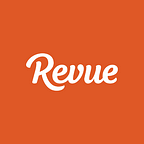Arjen van der Horst was expecting things to slow down. The Dutch Broadcast Foundation (NOS) had dispatched him to Washington to cover the US elections.
In his experience, the transition period between Election Day and Inauguration Day is the quietest period in the four-year election cycle. Not this time.
In the days and weeks after Trump’s victory Arjen got inundated with requests from the newsroom. He was struggling to keep up and decided to write a daily update for his colleagues back in the Netherlands. The email proved popular. Every day more people wanted to join.
That was only the beginning. Interest in news about Trump kept soaring and soon Arjen’s editor was wondering if the topic would be of interest to the general audience of the NOS. After a few tests on the website of the NOS, the “Trump Daily” was born.
The last piece of the puzzle was delivery. Arjen’s editor had seen several Dutch journalists using personal newsletter service Revue. Using Revue would make it easy to bring the daily email to a wide audience.
The plan worked well and what started as an email update for colleagues turned into a daily newsletter with 30.000 subscribers in less than 4 weeks. 84 issues later the open rate is still consistently above 60%.
The Resurgence of Editorial Newsletters
The creation of the Trump Daily newsletter was certainly opportunistic. The same holds for the choice of email as its medium, which was made very early in the process. At the same time, it is very much in line with a strategic trend back to email.
Newsletters seemed all but dead at the height of the social media revolution. But publishers started noticing as early as 2014 that relying on Facebook and other platforms was dangerous.
Charlotte Fagerlund describes this trend in her 2016 research “Back to the Future- Email Newsletters as a Digital Channel for Journalism”.
The report, co-commissioned by the Swedish Journalist Fund and the London School of Economics finds many advantages of the good old newsletter.
Fagerlund cites independence of Facebook’s algorithm, improvements in spam filters, mobile readability and the personal feel of email as success factors. Recently founded email-centric publishers like theSkimm are proof in point. Today, they deliver the top news stories of the day to more than 4 million inboxes every morning.
Established publishers are not far behind. The New York Times, the Financial Times and many others have started expanding their email newsletter offering.
Andrew Jack of the Financial Times has collected many examples in his 2016 report “Editorial Email Newsletter”. The research published by the Reuters Institute shows that newsletters are both popular and effective.
Publishers such as The New York Times are approaching 1 million subscribers with their flagship newsletters. And the content actually gets seen as proven by open rates approaching 60%.
Revue — several personal newsletters under one roof
Not surprisingly, the NOS was keen on expanding the success of the “Trump Daily”. They wanted other journalists like Arjen to create a personal newsletter.
The NOS invited Revue to be part of the discussion on how to capitalize on the opportunity. Everybody liked the direction, but there were a few questions. One point was how to keep newsletters personal while also featuring the NOS brand. Another was the wish to maintain editorial control.
Coincidentally, another user had contacted Revue with similar questions.
StartupDigest had been using Revue for one of their editorial newsletters, the weekly “Marketing Technology digest”. It was working well and StartupDigest was keen on using the platform for all of their 40 newsletters and 700 curators.
Their ideal platform would let curators work independently while an editor would check for compliance with editorial guidelines.
Hence Revue for publishers was born, a solution that brings a range of personal newsletters together under one roof.
An approval workflow leaves the editor in control. A group of curators submits personal newsletter content. The editor approves for sending or requests changes.
And a central template addresses the branding issue. Its layout centers around the journalist or topic while maintaining a connection with the brand. The template focuses on the journalist or topic, but also creates a connection with the brand.
